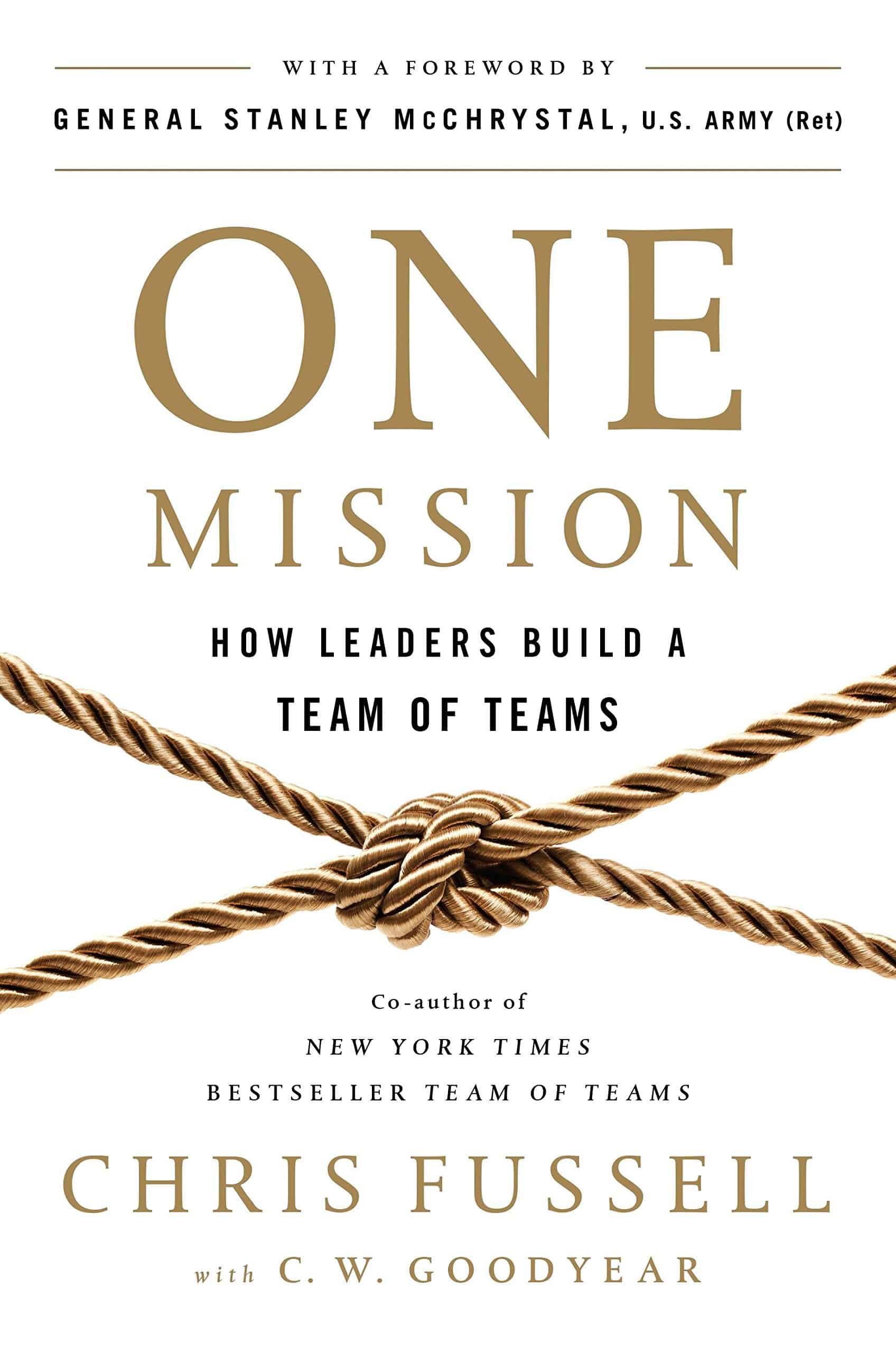One Mission
How Leaders Build a Team of Teams
Author: Chris Fussell

No available rating

👍GetAbstract Rating: 8/10

GetAbstract Summary Preview
Step One: An Aligning Narrative
Intellectually, the hybrid structure presented by Fussell in the first part of the book makes sense. The true challenge is applying the structure to real-life, continuously evolving situations involving real-life people.
Fussell lays out in detail the steps needed to turn theory into battlefield and business practice. The first vital step is an aligning narrative. The Task Force, Fussell writes, had a specifically stated mission: “Defeat Al Qaeda in Iraq.” That was the strategy at the top of the organization. The operational level consisted of two groups: Intelligence, which mapped the insurgent structure and collected sources inside, and the SEALs, who conducted the operations. The tactical level of the organizations consisted of the various analyst teams gathering intelligence and the various SEAL platoons conducting operations.
The problem, as in many organizations, is that “defeating Al Qaeda in Iraq” could mean different things to different units at the operational and tactical levels — because the mission did not define the “how.” While defeating Al Qaeda remained, of course, the main goal of the Task Force, McChrystal laid out a more specific goal that he summarized as Credibility = Proven Competence + Integrity + Relationships. Competence had always been a priority, but McChrystal thus added other priorities that emphasized the importance of trust and of developing relationships. As Fussell explains, “Our overarching goal now was not to simply ‘defeat Al Qaeda in Iraq’ but to become the type of culture that could beat a complex enemy.” McChrystal’s equation was the aligning narrative whose detailed prescription could not be misinterpreted, and that guided more precisely what the organization needed to do, day in and day out.
In a chapter-length case study on Intuit, Fussell demonstrates how an aligning narrative can be used in the business domain to keep a hybrid organization on track and effective.
Balancing Autonomy and a Unified Mission
In equal detail and with a long business case study as illustration, One Mission develops the other ingredients of a successful hybrid organization, including the interconnections of the organization, using the network elements of influencers and boundary spanners; the operating rhythm, that is, the selected cadence (24 hours in the case of the Task Force) at which the organization balances between autonomous execution and the group’s realignment on the mission; and the decision space, which defines the exact parameters of autonomy for the networks.
Detailed military and business examples make One Mission a highly credible leader’s manual for dramatically rethinking the structure of your organization.
About The Author & Review
About The Author:
Former Navy SEAL Chris Fussell channels his corporate and military experiences into powerful strategies for unifying isolated and distrustful teams. This practical guide will help leaders in any field to tear down their silos, improve collaboration, and avoid turf wars. By committing to one higher mission, organizations develop an overall capability that far exceeds the sum of their parts.
Review:
In his 2015 book, Team of Teams, General Stanley McChrystal, leader of an elite counterterrorism Task Force in Iraq fighting against Al Qaeda, described with his co-authors a new organizational leadership approach — one that replaced the traditional rules of a top-down hierarchy with rules that apply to the titular “team of teams” concept.
Former SEAL Chris Fussell, who rose through the leadership ranks of McChrystal’s Task Force, to eventually become his aide-de-camp, and who would later collaborate on Team of Teams,, has written the how-to sequel to the first book. Called One Mission: How Leaders Build a Team of Teams, Fussell’s book begins by introducing a new organizational hybrid structure, exemplified by the Task Force, that combines the traditional hierarchical bureaucracy with the concept of a networked organization.
This hybrid structure, Fussell writes, harnesses “the speed and information-sharing capabilities offered by the informal relationships found in networks while retaining the efficiency, reliability, and predictability of a bureaucracy.” In schematic forms, the hybrid structure shows the traditional bureaucracy’s solid-line cascade of positions overlaid with the dotted interconnections fingering in every direction through the vertical and horizontal structure.

